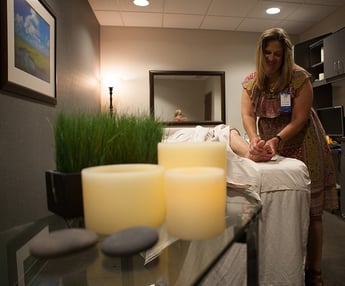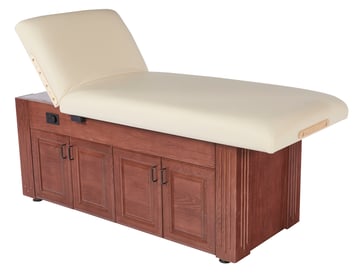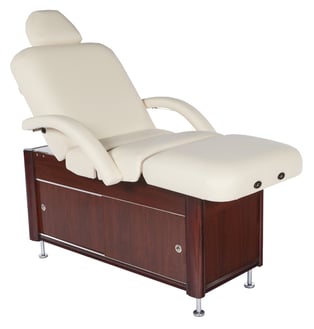How You Can Add Spa Services to Your Practice
According to the International Spa Association (ISPA), spas raked in a whopping 15 billion dollars in revenue in 2014, up 5.3% from the year before. Americans enjoyed 176 million spa visits with an average ticket of $88 per visit. In fact, the spa industry has experienced continued growth over the last five years. By adding a few simple pieces of equipment, some basic supplies and a couple of new products, you can increase your bottom line and add an interesting diversity that your clients are bound to love.

According to the International Spa Association (ISPA), spas raked in a whopping 15 billion dollars in revenue in 2014, up 5.3% from the year before. Americans enjoyed 176 million spa visits with an average ticket of $88 per visit. In fact, the spa industry has experienced continued growth over the last five years. By adding a few simple pieces of equipment, some basic supplies and a couple of new products, you can increase your bottom line and add an interesting diversity that your clients are bound to love.
 One of the best ways to research which spa treatments your clients might like is to go directly to the source. Email a survey to your client list. There are multiple free survey services on the internet—and creating one to ask which treatments clients might like to experience will be beneficial. To get the best results, your survey should be short and focused with simple, closed-ended questions and take no longer than five minutes to complete.
One of the best ways to research which spa treatments your clients might like is to go directly to the source. Email a survey to your client list. There are multiple free survey services on the internet—and creating one to ask which treatments clients might like to experience will be beneficial. To get the best results, your survey should be short and focused with simple, closed-ended questions and take no longer than five minutes to complete.If you don’t have a client email list, attach a short, anonymous survey to your health history form. Your clients will love being involved in the creation process. Make sure to send them a notice when your new menu is available and offer them a discount on their first spa service.

- Stand-alone treatments are typically 60 to 90-minutes long and incorporate some massage.
- Express services are those that can be completed in about half an hour. Area-specific body scrubs and foot soaks are good choices for anyone looking for a little pampering without a large investment of time or money.
- Add-on services are those that you incorporate into your regular massage offerings. They often do not require any additional time, and therefore can boost your profits significantly. Suggestions include custom aromatherapy massage blends, hot towels for the feet, face or back (or all three), or an exfoliating foot scrub.
Equipment
can set up your spa room with very little added investment. Since you’ll be removing muds and scrubs with warm, moist towels, you’ll need a heating unit. A roaster works well for this purpose or you can choose to invest in a hot towel cabinet.
 Rubber bowls will heat your product without the risk of burning your hands and can be nestled between the hot towels for support.
Rubber bowls will heat your product without the risk of burning your hands and can be nestled between the hot towels for support.Choosing products for your spa services can be a daunting task. There are thousands of companies selling scrubs, muds, body butters and essential oils at a huge range of price points. Look for products that contain skin-nourishing ingredients from companies whose philosophies align with yours. Ask your colleagues for recommendations and test a product line before purchasing. (Of course, this is just a laundry list to consider and does not replace training.

Custom Craftworks
Originally founded in 1986, Custom Craftworks supports the vital work of professional manual therapists and educators in the massage therapy and holistic health fields by designing, building and sourcing the best-quality massage tables, chairs, equipment and accessories available. In 2009, the company was acquired by Pivotal Health Solutions based in Watertown, South Dakota.


